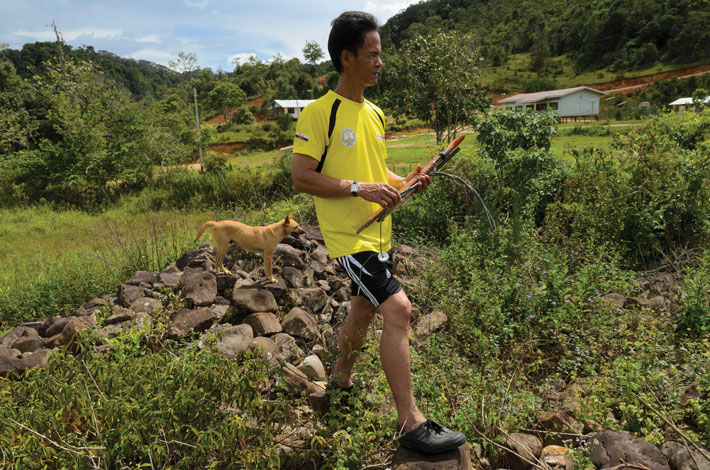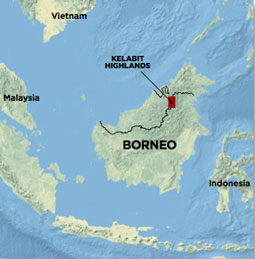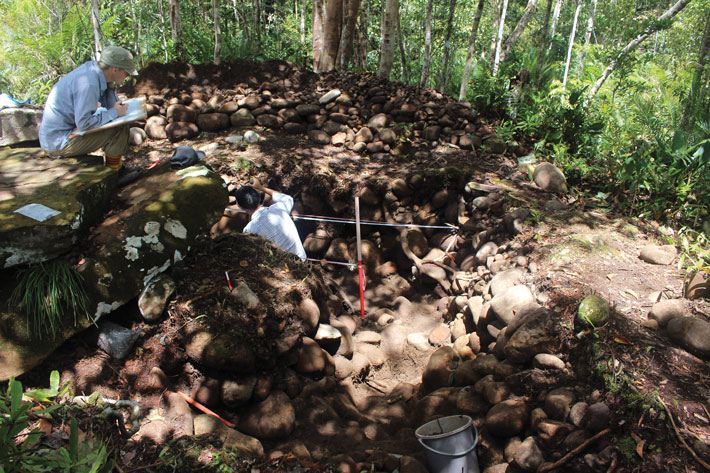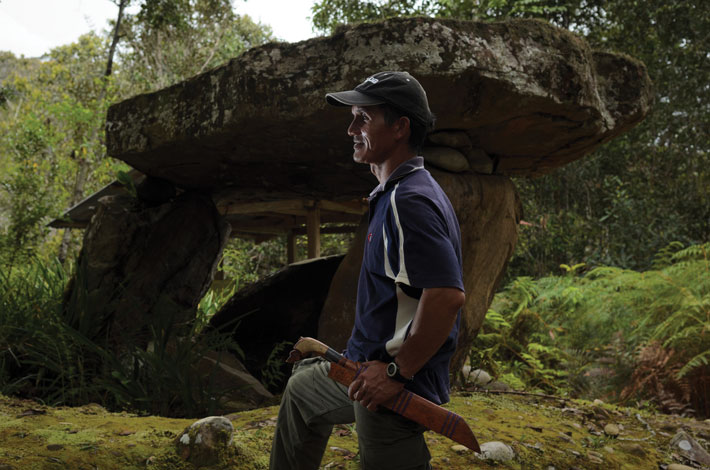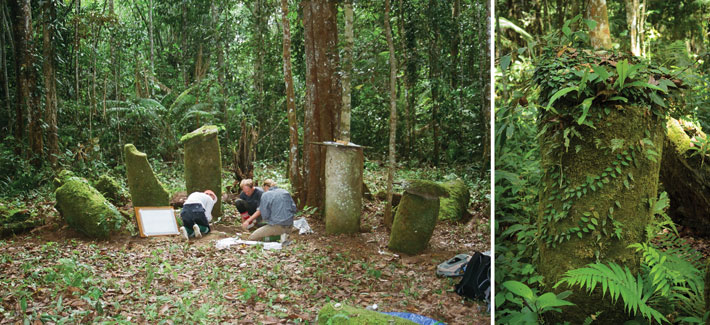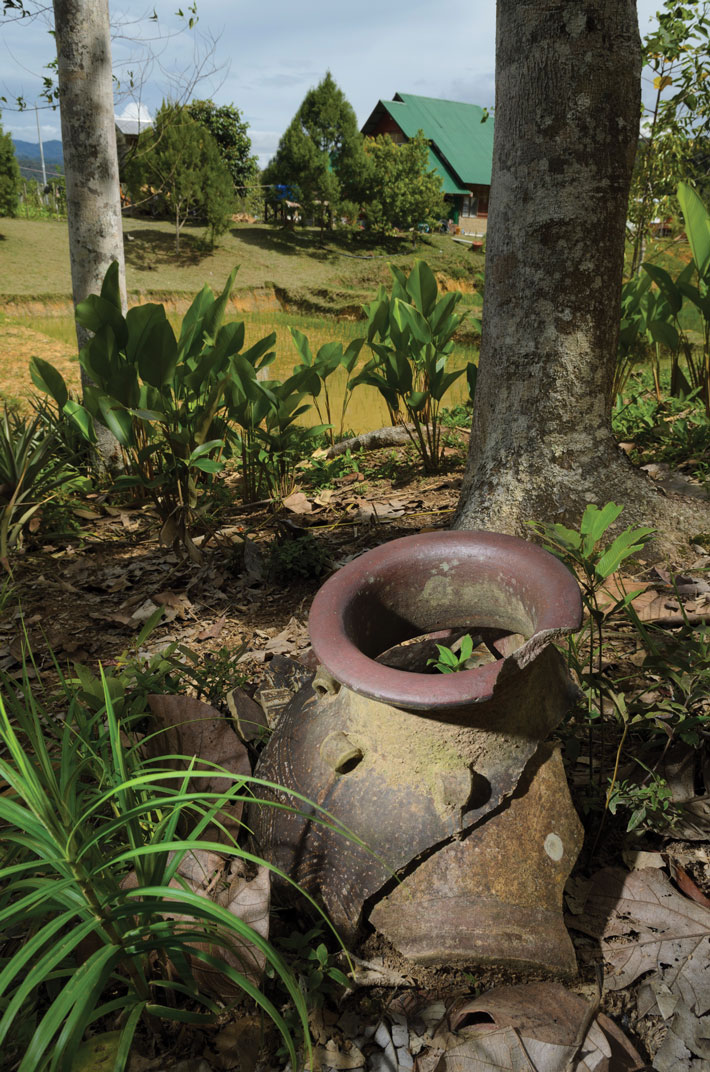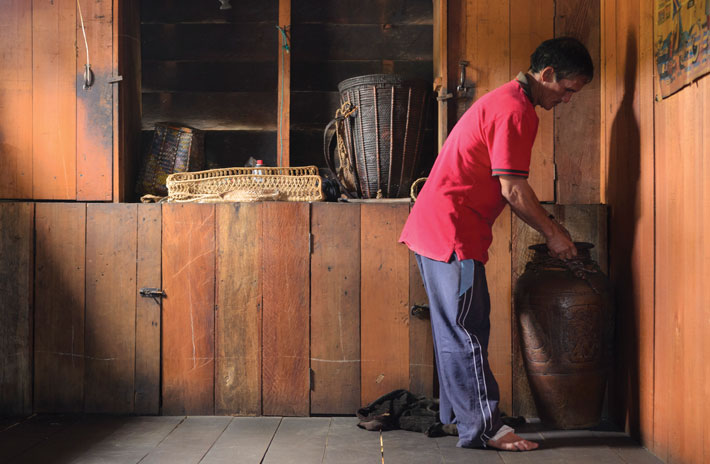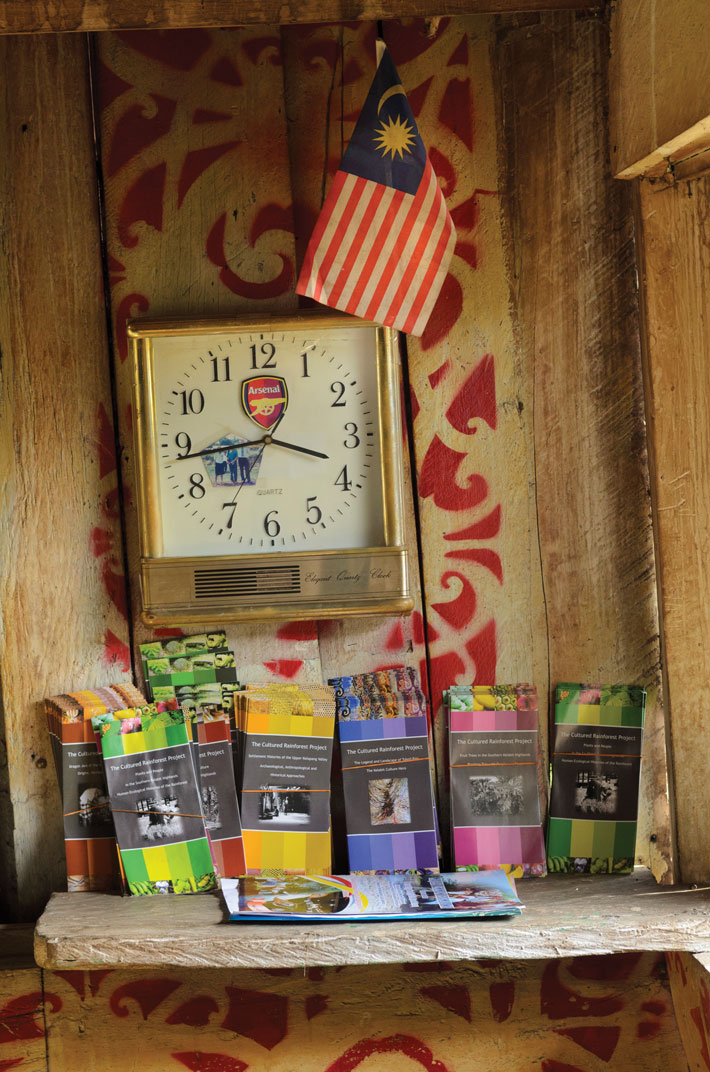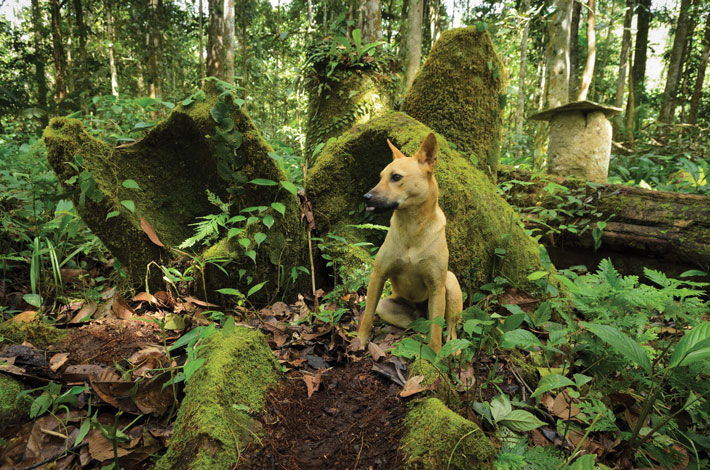
Adenan (second left) is at home in rural Sarawak in this picture taken in 2003.
HE
REGARDS Sarawak as heaven on earth, cultural diversity and harmony. As
a former Minister of Agriculture and Food Industries Sarawak, he knows
every nook and corner of the state, having intimate knowledge of their
needs and peculiarities.
His continuous call for unity resonates
throughout the state in multi-racial and religious settings, while his
efficiency in the public service makes him stand out in the state’s
political and social landscape.
Everyone has a different idea of
who or what he is, but everyone agrees that he has a sharp analytical
mind, is a brainy and decisive leader and an experienced hand in affairs
of the state and it’s state of affairs.
After 35 years as elected
representative and 28 years holding state and federal cabinet posts,
Tan Sri Datuk Amar Adenan Satem is now ready to write the next chapter
in leading Sarawak with effect from his swearing-in yesterday.

SUPP publicity and information secretary Datuk Sebastian Ting (left) extending his congratulations
to then CM-designate Adenan.
He is as public a figure as it gets in Sarawak, but has strangely remained an enigma to many who do not know him up close.
To
those close to him, he is also known as a hotshot in game hunting in
his younger days, a fishing enthusiast, an avid reader and a sci-fi
movie buff.
To his immediate circle, he is a wonderful person; generous, compassionate, insightful and humorous.
To the political circle, he is a no-nonsense, incisive leader with the knack of reading one’s mind.
His eyes may be closed when the speeches are getting underway, but his brain is anything but idle.
His
collected thoughts, wits and message collate into rib-tickling but
flourishing speeches without fail at many functions he officiates.
His
predecessor Pehin Sri Abdul Taib Mahmud on one occasion managed to lace
an explanation and advice with humour in addressing complaints of
aloofness against the former.
Saying Adenan had a heart of gold,
Taib said this thinking minister was always so engrossed in his thoughts
that he could literally walk into glass walls.
The minister was
officiating a function in Miri when it was reported in the press, and
with a laugh, he later told this author that a reply was in order.
His
tongue-in-cheek riposte was: “I thank the Chief Minister for his kind
words, and will try to remember not to walk into glass walls,” which was
reported in the The Borneo Post and Utusan Borneo.
A decade ago
in Buduk Nur in Ba Kelalan, he publicly declared having a soft spot for
the Orang Ulu communities in the interior of Sarawak.
“I will
always find an excuse to visit Orang Ulus since the days of Datuk Balan
Seling and Datuk Racha Umong because I like them- simple as that,” he
said, agreeing with the remark of his close friend and then Ba Kelalan
state assemblyman, the late Datuk Dr Judson Sakai, that the minorities
in Sarawak have a friend in Adenan.
Adenan is also a stickler for education and remaining true to one’s roots.
Years
back, he told parents at a seminar in Lawas: “My mother was responsible
for my becoming a minister, and she has always paid attention despite
being illiterate, making sure that I ate, clothed and went to school.”
She also made it a point to monitor his conduct and progress from
primary school to university level, but letting him enjoy the freedom to
play after school.
On the political scene, he worked best behind the scenes with results which speak for themselves.
He
was instrumental in bringing back Parti Bansa Dayak Sarawak (PBDS) back
into the BN fold after the Ming Court Affair in 1987, paving the way
for political stability which has lasted to this day.
Under his
watch as Chief Minister in this challenging transition period, Sarawak
can look forward to responsible, matured and experienced leadership from
Adenan and his team.
His conviction and approach is reflected in a
speech he gave in 2005 at the opening of the Triennial General Meeting
of PBB Marudi, Senadin, Piasau and Lambir divisions.
“The greater
the power, the greater is the responsibility to uphold political
stability and with power comes big responsibilities which you must carry
as the biggest successful political party, “ he said.
A united
front by PBB as the backbone of the state BN is expected by the Chief
Minister cum party president in his call at the party’s supreme council
meeting that all the senior leaders from president to vice-presidents
should be returned uncontested for the sake of unity.
“This is to
avoid any split and unhappiness which is bound to happen no matter what
Hollywood (play-acting) and handshakes displayed before any contest,”
said Adenan back then.
The smooth transition and unity in PBB
despite the three horse-race for the Chief Minister post involving him,
deputy president Datuk Amar Abang Johari Tun Openg and senior
vicepresident Datuk Amar Awang Tengah Ali Hasan speaks of the inherent
leadership policy of the party he will inherit.
“Our stand is to
bring as many people with the same wavelength under one umbrella and
that is the reason why PBB is the most successful party in the state
while SNAP split to PBDS, PRS and whatever remains,“ he said in 2005.
Adenan’s
experience in the last 35 years as elected representative and 28 years
with ministerial portfolios has drummed home clearly the reality of
minorities working together with the majority to keep up with the
mainstream.
“You have to go with the flow or risk being left high and dry like debris on the river bank,“ he said.

Adenan
(left) presenting a token of appreciation to Deputy Prime Minister Tan
Sri Muhyiddin Yassin on Feb 14, this year in Lundu as Deputy
Chief Minister Datuk Patinggi Tan Sri Alfred Jabu (centre) looks on.
Speaking
at a Rurum Kelabit function in Miri in 2005, Adenan said he made it a
point that minorities tend to be marginalised, and he is inclined to use
whatever high positions held to reach out to them- irrespective of
whether they were Kelabits, Kayans, Lun Bawangs or even the small Indian
community.
His Kelabit name is ‘Maran Ribet’ meaning ‘Handsome Nobleman’.
He
was bestowed the name over a decade ago, and the community is likely to
invite him for another name-changing ceremony to reflect his current
status.
Admitting his love for the highland countryside, with its
tranquility of nature in remote places, he said the peace and quiet is a
refreshing experience for the weary mind, away from the hustle-bustle
of the cities, the rat races and the madding crowd.









